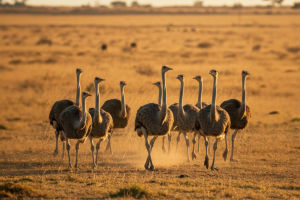Hi Lykkers! As cities expand and natural habitats shrink, humans and wildlife are crossing paths more than ever before.
Whether it's a deer wandering into a backyard, a raccoon rummaging through a bin, or an elephant straying into farmland, these encounters can lead to stress, danger, and misunderstandings—on both sides.
But it doesn't have to be that way. Coexistence is possible, and it starts with awareness, respect, and smart strategies.
In this guide, we'll explore how to reduce conflict with wild animals, protect your home or crops, and create safer spaces for everyone. Whether you live in a rural village or a bustling suburb, you have a part to play in peaceful wildlife sharing.
Part 1: Why Conflicts Happen and How to Prevent Them
Let's first explore what's causing these run-ins—and how a few small changes can reduce tension between humans and wildlife.
Habitat Overlap and Food Sources
Wild animals are incredibly adaptable, and many are drawn to human areas in search of food or shelter. Trash bins, gardens, pet food, and compost piles can act as easy buffets for raccoons, foxes, monkeys, and many more.
You can reduce temptation by securing bins with wildlife-proof lids, bringing in pet food at night, and keeping compost contained. Fencing off gardens or using motion-activated lights can also help keep curious visitors at a safe distance.
Light, Noise, and Movement Matter
Bright lights and noisy environments may deter some animals—but attract others. For example, outdoor lighting can disturb nocturnal animals and make them more active at the wrong times. Try using motion-sensitive lights rather than constant illumination, and avoid loud tools near wildlife zones when possible.
It's also helpful to understand animal patterns. If you notice wildlife passing through your yard at certain hours, give them space during that time. Avoid sudden movements or loud noises, especially with larger species.
Protecting Pets and Livestock Humanely
If you live near forests or reserves, you might worry about predators like coyotes, leopards, or large birds. The key here is prevention without harm. Build sturdy, enclosed shelters for livestock, bring pets inside at night, and install fencing designed to keep wild animals out without trapping or hurting them.
These steps not only keep animals safe but also reduce the chance of retaliation against wildlife. Remember, animals aren't being malicious—they're simply following instincts in a shared space.
Part 2: Long-Term Coexistence and Community Solutions
Now that you've learned how to make your immediate space safer, let's talk about broader solutions—because peaceful coexistence works best when it's shared across neighborhoods and communities.
Support Wildlife Corridors and Green Spaces
One of the most effective ways to reduce conflict is by maintaining natural movement paths. Wildlife corridors—whether official or informal—allow animals to pass through safely without needing to cross highways or enter residential zones.
You can support these efforts by backing city planning projects that preserve green belts, reduce unnecessary fencing, and keep migration paths open. If you have property near wild areas, consider planting native plants and allowing quiet, undisturbed zones where animals can pass through.
Community Education and Local Involvement
Not everyone has the same knowledge about local wildlife. Hosting or attending community workshops, sharing accurate information online, and working with local wildlife agencies can help everyone understand how to respond calmly and responsibly.
Encourage your neighborhood or village to adopt shared strategies—like coordinated compost systems, better fencing, or community gardens designed with wildlife in mind. The more people are on board, the better the outcomes.
Report, Don't React
If you see injured or distressed wildlife, or if an animal keeps returning and becoming a danger, don't take action into your own hands. Call local wildlife experts or conservation officers. These professionals know how to relocate animals humanely or address recurring issues with care.
Avoid traps, poisons, or aggressive actions—these often create more harm than good, and can even lead to more conflict later on.
So Lykkers, living alongside wild animals doesn't have to be a battle. With a mix of simple precautions, community support, and a shift in mindset, you can create a space where people and wildlife share the land with less stress and more balance. After all, we’re not separate from nature—we're part of it.


